Forecasting Market Share in Pharma Markets
the literature and models on forecasting market share in pharma markets.
Asserting that the pharmaceutical industry has faced turmoil in recent years would likely see few objections. Between a global digital transformation and wide-reaching COVID-related restrictions and supply chain disruptions, the industry has had to brace for the future equal parts promising and challenging.
Indeed, global pharmaceutical market growth remains largely unabated – in part also due to COVID-19-related acceleration, a point the World Economic Forum has also made before. Still, forecasting market share in pharma markets remains a significant challenge for individual brands and marketers. Arguably, such challenges have remained practically inherent in the industry and are seen as circumstantial fertile ground.
Subscribe to receive weekly marketing insights
Forecasting market share in times of instability
The initial factor of broader instability likely requires little explanation, but we may briefly outline it for clarity. Initially, the pharmaceutical industry exhibits some unique characteristics, which Gökçe Candan, Mehmet Fatih Taşkin, and Harun Reşit Yazgan cite Giuffrida to outline:
Uncertainty of diseases, their curing, and the availability of drugs
Patients, doctors, and health insurance expectations are different
Patent protection and brand loyalty determine the market power.
These characteristics have traditionally introduced elements of unpredictability, which the onset of COVID-19 has only exacerbated. For instance, Arda Ural has recently delved into the "critical acute weaknesses in drug development and manufacturing supply chains," echoing multiple similar introspections these circumstances have sparked.
That forecasting remains a complex endeavor, often prone to failure, certainly helps little either. Demand forecasting alone, a crucial forecasting factor, is "a relatively new task for the pharmaceutical industry” as well, as Galina Merkuryeva, Aija Valbergab, and Alexander Smirnov argue. It is nonetheless imperative as well, as they too note “the complexity [of the supply chain of pharmaceutical products] is considered as one of the main barriers to performance and efficiency improvements of a pharmaceutical supply chain.”
The first-to-market advantage
An additional challenge to forecasting market share in pharma markets lies in the inherent incentive to pioneer and innovate.
An initial reason for this is strictly practical. As Daniel Porath notes, "the bulk of the costs for a launch, most notably the costs for research and development, have to be earned during the period that pharmaceutical drugs are under patent protection ."Indeed, a successful drug launch will typically bear this factor in mind, as patent status expiration typically allows for “biologically equivalent and much cheaper imitators [i.e., generics, to] enter the market and drag down the pioneer's market share." A second reason lies in said "pioneer's advantage," a well-documented benefit, as McKinsey illustrates:
A graph illustrating the first-to-market advantage by McKinsey.
Yet, they too note that "first-to-market advantage is highly dependent on several market contexts," including:
Prescriber characteristics
Route of administration
Competitive dynamics
Capabilities
Lead time
Product label.
These factors do still ensure an average lead of 6%, but often vary significantly enough not to be entirely actionable:
A graph illustrating the degree of first-mover advantage in different situations by McKinsey.
Within this context, Daniel Porath highlights the primary challenge of order-of-entry literature:
“The literature on order-of-entry effects for pharmaceuticals indeed confirms [the “pioneer’s advantage”]. Apart from this confirmation, however, the existing literature hardly gives any further guideline for companies planning the optimal moment for a new launch.”
Indeed, oversimplification may easily lead to marketing mistakes, jeopardizing a drug’s launch and course alike. That pharma marketers can already fall into common marketing pitfalls only exacerbates this issue further. For instance, wpfullcare.com finds that poor WordPress maintenance and lack of security can diminish customer trust alongside final sales, which is another factor to account for.
The order-of-entry factor toward peak market share
Still, the order-of-entry factor remains crucial when forecasting market share in pharma markets – especially peak market share. For instance, David Ridley and Stephane Régnier found that “a 1% increase in promotional spending was associated with a .46% increase in peak market share” for first entrants. “Relative to a second entrant, with no change in spending," they continue, “peak market share was 18% lower for the third entrant and 23% lower for the fourth”. On their paper, they used these figures to estimate peak market shares as follows:
The formula used by David Ridley and Stephane Régnier to estimate peak market shares based on promotional share across competitors.
That too, however, presents analytical challenges, as Daniel Porath notes that “none of the econometric studies directly uses market shares as an independent variable ."Estimating the effects of entry order on market shares through the linear econometric model approach, he argues, is unreliable; "since market shares are bounded between the values of 0 and 1, a linear model would be inadequate."
Sales forecasting techniques
To begin addressing such concerns and informing market share forecasts, Gary Johnson proposes the five most reliable sales forecast techniques. To some extent, they address a market element among those mentioned above, offering better forecasting accuracy. In brief, for text economy, these are the following.
#1 Zipf's law
Retrofitted to a degree from linguistics, Zipf’s law finds applications in the pharma industry as regards the order-of-entry factor. It holds that pioneers get to maintain larger market shares over time, as McKinsey asserted above.
#2 Conjoint-type models
A simple analysis tool, conjoint models, instead focus on product attractiveness relative to the competition. While not standalone tools for forecasting market share in pharma markets, they can offer excellent predictions of product performance. Notably, such models do see synergistic use with econometric share models toward reducing forecast error rates, as Inpharmation illustrates:
An illustration by Inpharmation that outlines the synergy between different forecasting models toward reducing forecast error.
#3 Elasticity models
Another tool for linking marketing spending to market share lies in elasticity models. These typically see use toward forecasting promotional spending's effect on market shares, as David Ridley and Stephane Régnier did above.
#4 The Bass model
Arguably the most-studied marketing model of all time, as Gary Johnson argues, the Bass model instead predicts uptake rates. In doing so and addressing this evidently crucial factor in the post-COVID era, it can help "predict the entire sales history of a new product."
#5 Simple extrapolation
Finally, simple extrapolation can also be used in projecting stable trends into the future. Notably, trend stability may always vary, so this technique may not be as safe or straightforward to apply as others. Still, under stable circumstances, it can undoubtedly yield actionable insights.
Adjusting forecasts and fine-tuning market research
Finally, Reuters’ Andrew Tolve makes a bold assertion we have now likely substantiated enough. He argues, “there’s a curious fact about primary market research[;] typically, it’s wrong ."To quantify this, he continues to say that “indeed, the discrepancy between preference share (the market share that primary market research estimates) and actual market share is often 50 per cent or higher."
To address this, he cites Todd Johnson of Kantar Health, who provides great suggestions to improve forecasting market share in pharma markets. Here, for text economy, we may only outline the basic premises of his advice:
Subjective adjustments. Initially, Johnson argues against subjective adjustments to rules of thumb for preference shares. He argues that “unless you have some really sound support behind a rule of thumb [like a normative database that provides historical trends], it may not be a good idea to always apply a set percentage.”
Verbal probability scales. Next, regarding verbal probability, Johnson argues for using the Juster Scale, if not its essence, for driving predictions. "My 'very probable' may be very different than your 'very probable," he argues, so “when we use something like the Juster scale, we weed out those physicians who are not going to prescribe at all[.]We not only look at a depth of interest but the breadth of interest."
Awareness, trial, and repeat purchase models. Finally, Johnson argues for a more pharma-focused Fourt-Woodlock equation, better predicting local performance and physician awareness. “If you can adjust your promotion depending on how many sales details, how much journal advertising, that’s going to affect the awareness and potentially the follow-through from the physicians,” he argues.
Arguably, that modernization challenges such as e-detailing persist today should only lend further credence to Johnson’s suggestions. They may not at all times offer universal solutions, as pharma forecasting literature remains conflicted on finer details, but they may undoubtedly provide another source of inspiration – and another safeguard.
Conclusion
To summarize, forecasting market share in pharma markets remains as challenging as ever. It requires diligent market research and an attentive eye on factors like entry-of-order, promotional spend, and product attractiveness. The industry's inherent challenges and first-to-market incentives have not made the post-COVID recovery any easier. Fortunately, digitization and relentless forecasting research have presented ample new opportunities and continue to offer a helping hand in times of instability. While only rudimentary, this article hopefully provided an optimistic enough overview of how they do so.
For more on strategic marketing approaches in the pharmaceutical sectors, and how we can help you, visit our section on strategy.






